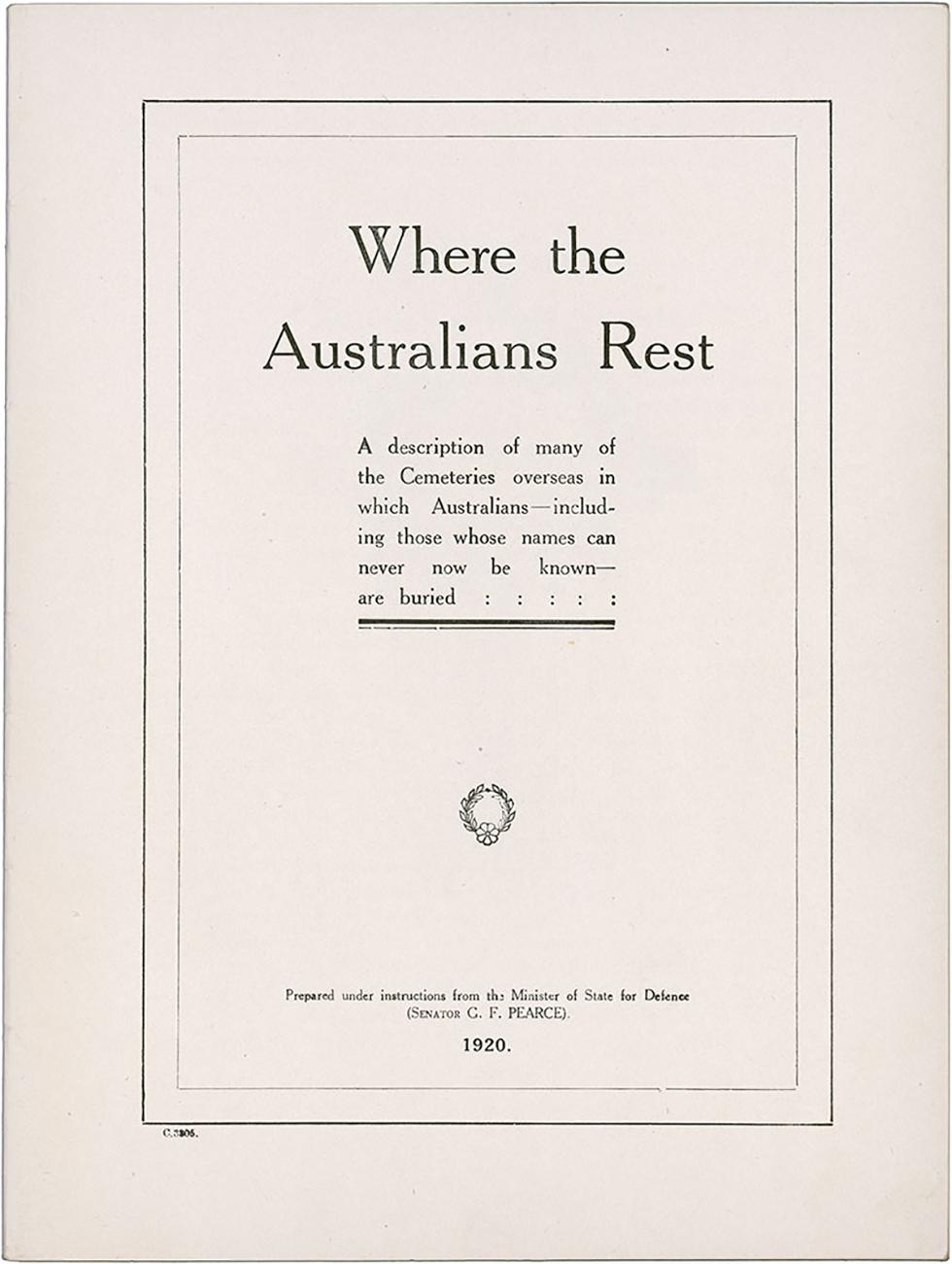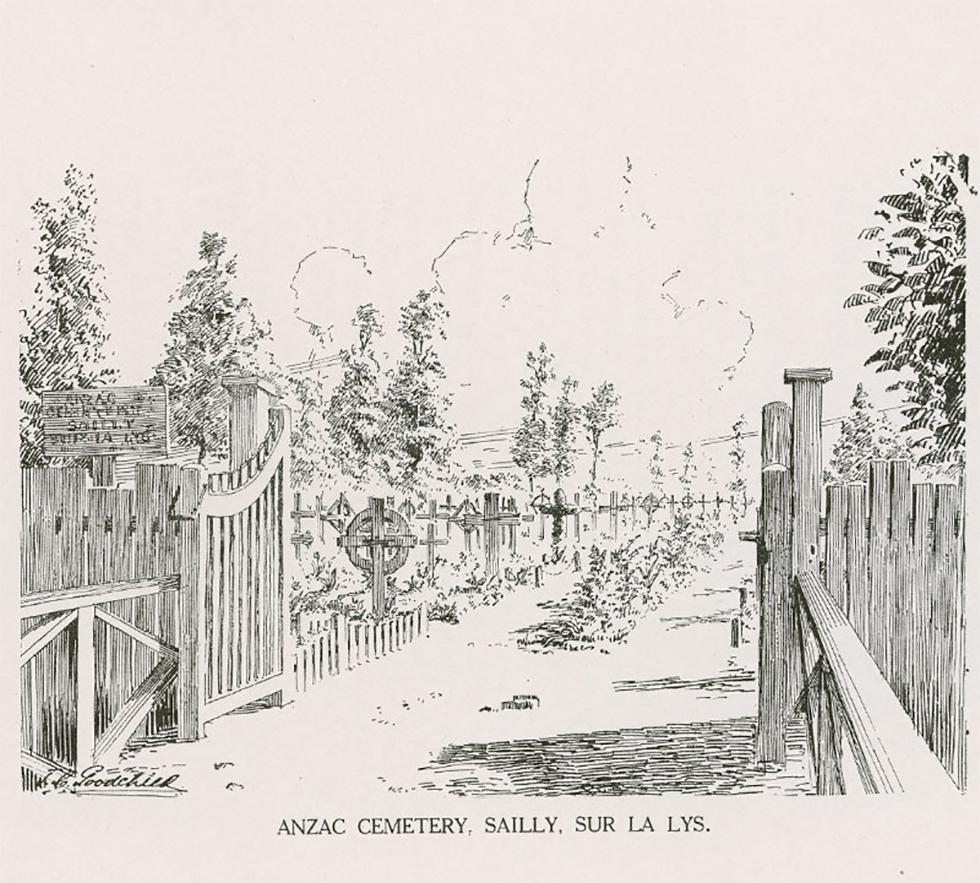

Aboriginal and Torres Strait Islander people should be aware that the National Archives' website and collection contain the names, images and voices of people who have died.
Some records include terms and views that are not appropriate today. They reflect the period in which they were created and are not the views of the National Archives.



These are two pages from a 72-page booklet titled Where the Australians rest. The first page displayed is the title page and the second (page 8) contains a drawing captioned ‘Anzac cemetery, Sailly, Sur La Lys’. This booklet, published by the Department of Defence in 1920, describes all the overseas cemeteries where Australian servicemen and servicewomen were laid to rest. It was presented to the next of kin of Australians who had died on active service during the first World War.
Learn how to interpret primary sources, use our collection and more.
